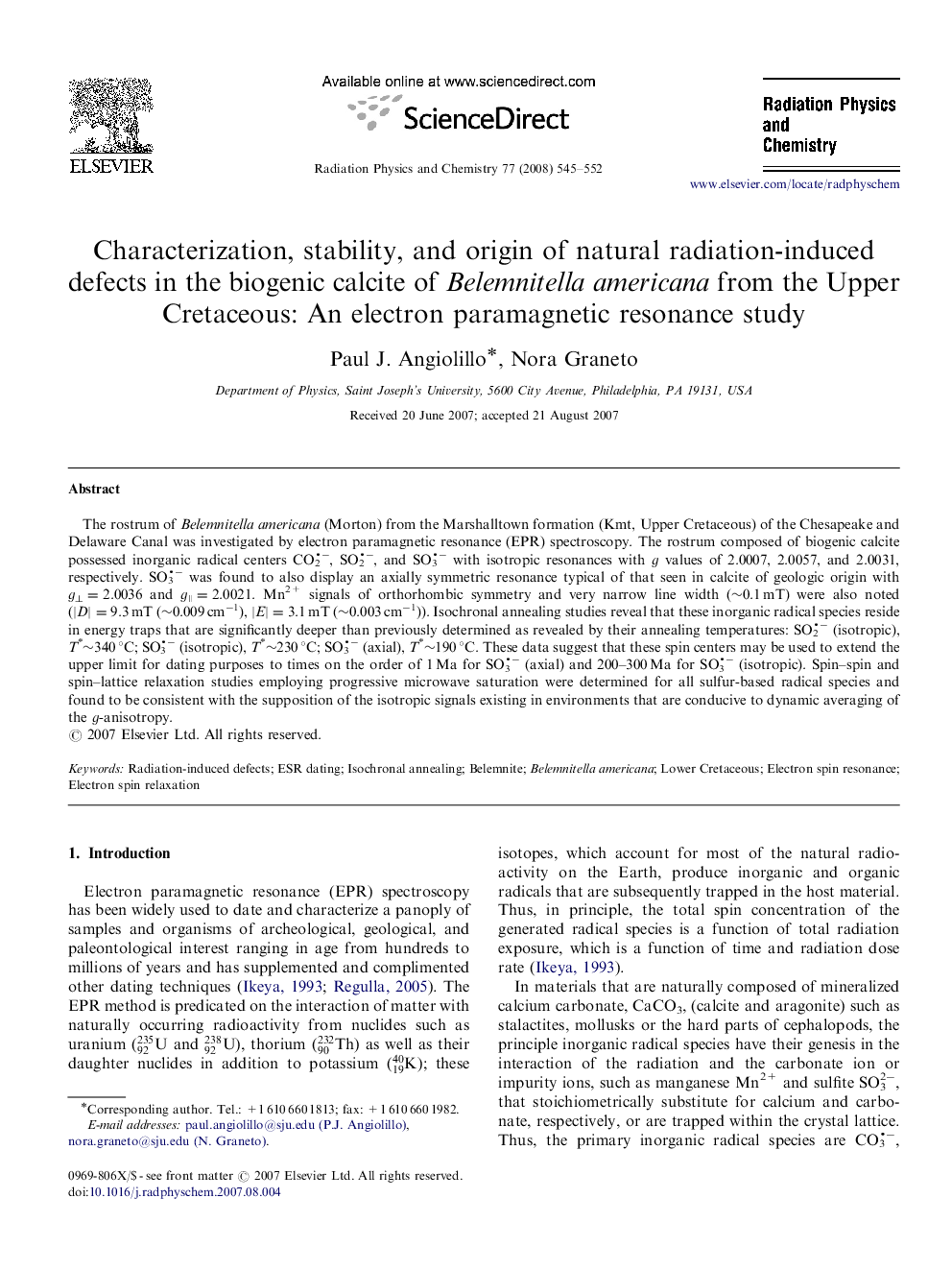| Article ID | Journal | Published Year | Pages | File Type |
|---|---|---|---|---|
| 1886999 | Radiation Physics and Chemistry | 2008 | 8 Pages |
The rostrum of Belemnitella americana (Morton) from the Marshalltown formation (Kmt, Upper Cretaceous) of the Chesapeake and Delaware Canal was investigated by electron paramagnetic resonance (EPR) spectroscopy. The rostrum composed of biogenic calcite possessed inorganic radical centers CO2−, SO2−, and SO3− with isotropic resonances with g values of 2.0007, 2.0057, and 2.0031, respectively. SO3− was found to also display an axially symmetric resonance typical of that seen in calcite of geologic origin with g⊥=2.0036 and g∥=2.0021. Mn2+ signals of orthorhombic symmetry and very narrow line width (∼0.1 mT) were also noted (|D|=9.3 mT (∼0.009 cm−1), |E|=3.1 mT (∼0.003 cm−1)). Isochronal annealing studies reveal that these inorganic radical species reside in energy traps that are significantly deeper than previously determined as revealed by their annealing temperatures: SO2− (isotropic), T*∼340 °C; SO3− (isotropic), T*∼230 °C; SO3− (axial), T*∼190 °C. These data suggest that these spin centers may be used to extend the upper limit for dating purposes to times on the order of 1 Ma for SO3− (axial) and 200–300 Ma for SO3− (isotropic). Spin–spin and spin–lattice relaxation studies employing progressive microwave saturation were determined for all sulfur-based radical species and found to be consistent with the supposition of the isotropic signals existing in environments that are conducive to dynamic averaging of the g-anisotropy.
